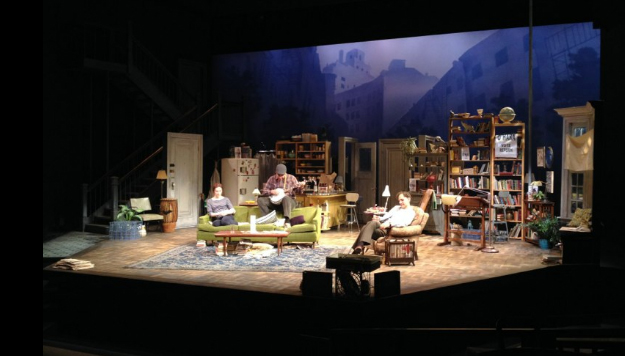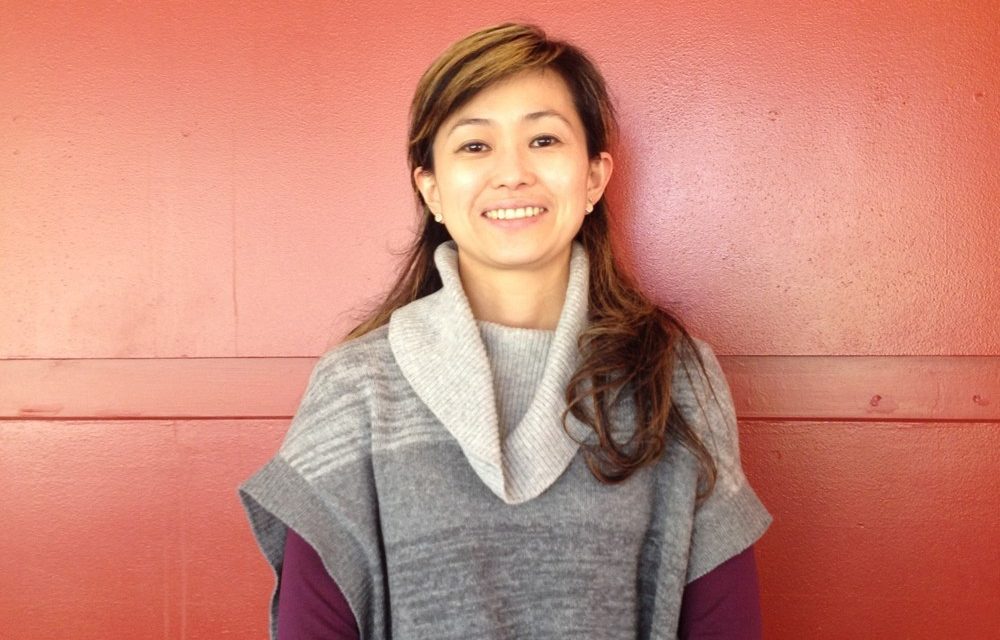Mikiko MacAdams
“I’m a dynamo as a boar,” said Mikiko MacAdams, a Japanese scenic designer.
She is visiting Seattle from New York as a designer for the sets of “Brownsville Song (b-side for tray),” a play that is being performed through April 24 at the Seattle Repertory Theatre.
“I am the kind of person who puts all efforts into one thing, and for me, it’s scenic design.”

Photo from mikikosuzukimacadams.com
Fascinated by the energy of a stage
MacAdams’ interest in working in a theater began when she was around 10. When she performed a concert for her ballet lesson, what fascinated her was not the pretty tutu — it was the back of the stage and the people working there.
“I remember that I wanted to be part of the energy at the stage,” said MacAdams. Later, she found out what she really wanted to do. “I fell in love with scenic design when I was 14,” said MacAdams, reflecting on the time she saw an opera, “The Barber of Seville.” “The biggest thing on the whole stage was a scenery set, much bigger than actors. When I saw it, I decided to become a scenic designer.”

Photo from mikikosuzukimacadams.com
Keep pursuing the dream
“Smart people tend to be worried about what they want to do, because they can do many things,” said MacAdams. “I’m not smart, so I didn’t have to worry about what to do. I wanted to be a scenic artist, and it was simple to do everything to make that dream come true.”
Soon after she saw the opera, MacAdams started taking painting lessons because she “thought it was necessary to be good at painting to be a scenic artist.” She even went to an art high school because she felt the need to be better at painting. She started working part-time at a theater on weekends in order to “learn about how stages work.”
However, there was one thing that made her question pursuing the dream: the great Hanshin earthquake, which killed countless people and destroyed numerous buildings and houses, including her family’s.
While helping her family and the victims of the earthquake, MacAdams questioned the importance of art. “I felt like art could not be of help for the people there.”
She, however, changed her mind after seeing the spirits of victims lift from performances of musical groups and artists who came to visit. “Maybe I’m a romanticist, but as I saw people encouraging the victims through plays and musicals, I decided to keep pursuing my dream.”

Photo by Chris Bennion
Rejected three times by Cornish
MacAdams flew to Seattle in the summer of 1993. “New York, Chicago, and Seattle. These were the places famous for plays and musicals.”
She said when she was living in Tokyo after graduating from high school, she felt overwhelmed by the Japanese capital. And she felt Chicago or New York would have left her feeling the same.
So, MacAdams chose Seattle to learn her craft.
She decided to take an ESL (English as a Second Language) course at the University of Washington (UW). She read in a book that she could audit classes (take classes for the purposes of self-enrichment and academic exploration, without the benefit of a grade or credit) while taking ESL, but that turned out to be false.
MacAdams studied only English, and could not take any art class.
“I wanted to learn art, not English,” said MacAdams. While she was attending the UW, she tried to transfer to Cornish College of the Arts in Seattle three times, but could not get in because of her English test scores. “Since my test scores were bad, they didn’t even take a look at my portfolio,” she explained. Unfazed, MacAdams called the administration office, managed to get an interview with the department chair, and it worked! She got in.
Bravery opens many paths
As soon as she began school at Cornish, MacAdams realized that she could not read scripts or understand what teachers were saying. “It was really hard,” said MacAdams, regretting not studying harder in high school. “But I had strong ambitions.”
She realized studying in college would not help her reach her goal. After some research, she decided to apply for Yale School of Drama.
MacAdams went to an internship for the performance, Silver Lining, hosted by Pacific Northwest Ballet. There, she got to talk to Ming Cho Lee, a Chinese American professor at Yale, who was a designer for the sets of the play. She showed Lee her portfolio and found his feedback practical and helpful.
When Lee told her to apply to Yale, she told him that she was bad at taking tests and said, “If you require those [English] exams, your school is not my school.” He promised her that he would waive her English test scores. “Looking back, I think I was really brave to say such a thing, but it was my honest thought. I really hated taking tests,” said MacAdams, laughing.
The following year, MacAdams applied to Yale.
During the interview, Lee gave her critical and strict comments on her portfolio, which she found refreshing. “In Japan, people gave me compliments — Lee was the first person who was really critical about my work.”
Lee, who noticed her positive attitude in spite of his criticism, asked her why she looked happy. She told him nobody had ever given her constructive criticism before. “I want to be a scenic designer, so I need to know what I need to do to achieve my dream,” she told Lee. Three minutes after the interview, she got accepted.
Money is secondary
MacAdams now works as a scenic designer, mainly in New York. Brian Fauska, technical director at Seattle Repertory Theatre, said, “Mikiko is always a pleasure to work with, she seems to care as much for the people she works with as the work we are doing. Creatively, she’s always impressed me with her ability to beautifully create both hyper-realistic and simple implied places. Mikiko sometimes asks us to stretch our resources to realize her designs, but I’ve never worked on a show with her where the result didn’t seem worth the extra effort.”
When asked about the hardest part of being a scenic designer, MacAdams giggled, “Being poor.” She admitted that in the 14 years since graduating from Yale, she tried different kinds of jobs in television and movies to earn more money.
“But,” she said, “they were not fun at all. I realized how fun it is for me to be a part of the energy in live theater. I always wanted to be a storyteller.”
MacAdams shared that she doesn’t think theater is a growing industry. “Its form may change. And I am ready to change with it.”
For more information about Brownsville Song (b-side for tray), visit seattlerep.org.





